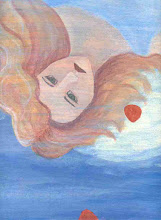How To Read a Story, written by Kate Messner, illustrated by Mark Siegel, 2015.
This delightfully illustrated book is absolutely charming. My eight-year-old son's favorite chapter was the chapter about using different voices for different characters. He took that advice straight to heart.
The Road Less Traveled, by M. Scott Peck, M.D., Touchstone Books, 1978.I found this book in a thrift store, so I paid my 65 cents and took it home.This book starts out well enough. In fact, if the author had stopped after the first half of this book, I would recommend it to just about anyone. The first half does not really contain any profound truths, but summing up listening as love is not a bad place to start.But the second half is problematic to the point of being dangerous. It is contradictory and murky, and unsettlingly theocratic.
Let's Go Rock Collecting, by Roma Gana, illustrated by Holly Keller, HarperCollins, 1997.
My son used this book for his Second Grade Science class. The text contains some solid information, and it is accessible to a second-grader; however, this book did not prove to be nearly as helpful as I hoped. I think the problem is with the illustrations. The illustrations, even of the rocks, are a bit cartoonish, which made it difficult for my son to match up his rock sample to the correct rock.
Cam Jansen, The Mystery of the Stolen Diamond, by David Adler, Puffin Books, 1980.
My second grade son read this book for his Literature class, and learn to make inferences and deductions using this book.
This book was my son's first introduction to a mystery story. It wasn't difficult for him to figure out, and he enjoyed it. But I can't be the only mom who nearly had a heart attack when the baby was brought into the 'den of thieves'.
Bad Kitty, Drawn to Trouble, by Nick Bruel, Roaring Brook Press, 2014.
From the very beginning, my eight-year-old son has been a big Bad Kitty fan -- possibly because he calls our Molly Kitten 'Bad Kitty'.
He received this book for Christmas, and he started reading it in January, which was, coincidently, when he was learning the difference between the plot and the theme of a story. I could NOT have explained the difference better than Uncle Murray.
And, my son has tried his hand at drawing Bad Kitty, and not just like the example. If Nick Bruel is ever looking for an assistant... ;)
The Josefina Story Quilt, by Eleanor Coerr, illustrated by Bruce Degen, HarperCollins, 1957.
My son read this book for his Literature class in Second Grade. He was learning about the way of life for pioneers, with an emphasis on story quilts. This little book fit right in.
The language was simple enough he could read this book on his own and understand it. The story was rather charming. Although the book was about pioneers traveling to California, the more timeless theme was about the bond between a child and his or her pet.
1066 and All That, by W.C. Sellar and R.J. Yeatman, illustrated by John Reynolds, E.P. Dutton, 1931.In England, I was dreadful at History. English History started with the Early Stone Age, and went on from there, so the American Revolution (or Rebellion) was a mere tiff, a trifle. As an American, it was hard to recast my mind. Also, this from the book, helps explain my confusion: "The Scots (originally Irish, but by now the Scotch) were at this time inhabiting Ireland, having driven the Irish (Picts) out of Scotland; with the Picts (originally Scots) were now Irish..." While this is humorously written, it is also true.I can't say this book helps me keep my British History straight, but it does make me feel better about being so dreadful at it.








